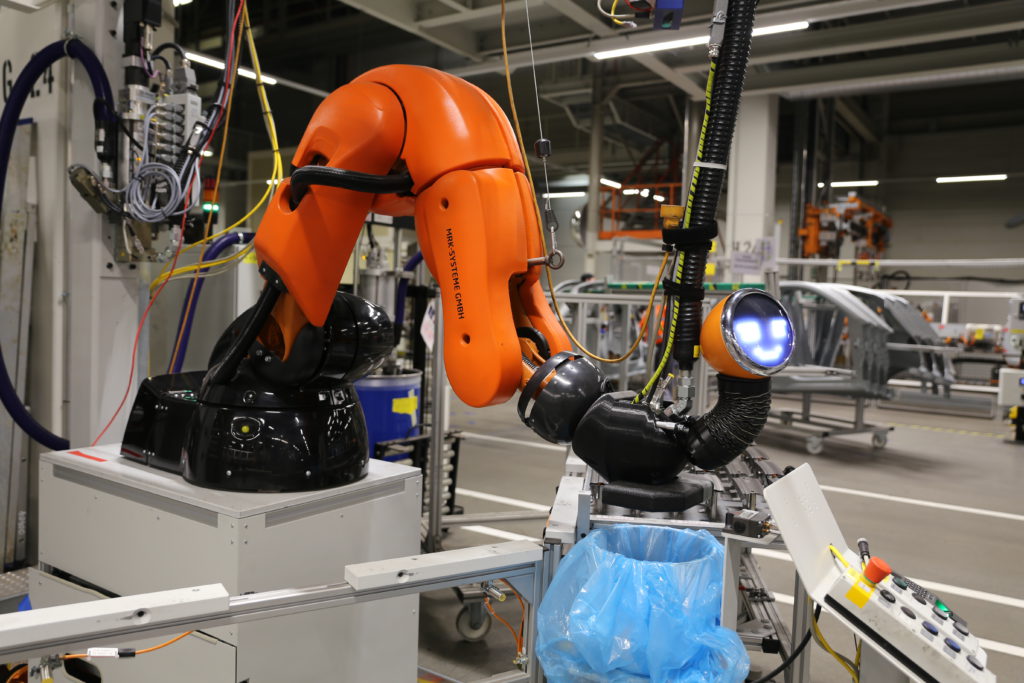This is Walt. Walt wants to take your job. With a smile on his face. He is not ready to take any job yet, but for the past 8 months he has been working at the Audi factory in Brussels. He helps the human factory workers to assemble the Audi A1 body’s.
Walt is surrounded by hundreds of other robots. The big difference is that they are all in cages, while Walt sits free as a bird, amid his human co workers. He is what is called a compliant collaborative robot, or cobot in short.
He recognises his human colleagues when he sees them, greets them with their name, and looks at their hands so they can give him gesture commands. Besides his friendly face, Walt can also display icons or short animations, to clearly state his intentions.
The face is the single most important instrument for direct communication between persons. Persons like humans, and like robots.
While the human face has a lot of very practical functions, most of its muscular capacity is focused on communication with other humans. The human face is capable of many forms of direct, indirect, even involuntary communication. Therefore head with a versatile face was designed.
For this part Robovision collaborated with character designer Jan De Coster, of Slightly Overdone, who has many years of experience with designing social robot characters. His robot characters are in exhibitions all over the world. The character he created for this project is called Walt. The chromed ring around his face is a very obvious reference to the Audi logo.
“I have introduced robots in many environments, even in very different cultures, but the Audi factory floor proved to be extra challenging, because the audience here consists of sturdy assembly line workers. The smiling robot face first looked very alien in their working environment, and Walt had to deal with some skepticism at first. I am convinced that this is the way forward for collaboration between humans and robots in these environments. The very least effect is that it will bring a little extra humanity in the industrial machine world. “ – Jan De Coster

